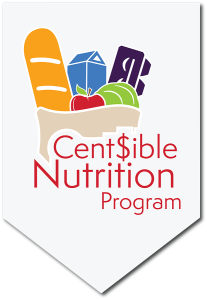Wyoming’s dry climate means that watering is especially important for gardens. There are several different ways to water your garden, each with its own advantages and disadvantages. Finding the right watering method is the best way to help prevent over-watering or under-watering.
Signs of Over-watering
- Leaves wilt and drop off
- Yellowing leaves
- Water soaked spots and blisters
- Soft, mushy stem base or rotting roots
- Visible fungus or mold forming on top of the soil
Signs of Under-watering
- Stunted, slow growth
- Brown, dry or curling leaf edges
- Flowering plants fail to produce blossoms
- Brittle, crisp stems
Option 1: Hand Watering
Materials Needed:
- Hose with a nozzle or a watering can
Advantages:
- Least expensive option
- Provides one-on-one contact with your garden
- Problems with insects, disease, weeds, etc. can be noted and taken care of right away
- A great way to monitor growing progress
Disadvantages:
- Difficult to manage water applied, could be too much, not enough, or just right
- Standing water may increase plant disease problems
- Water runoff could contribute to root disease
- Water could be wasted by over-watering
How To:
- Add a spray nozzle to the end of your hose to help minimize plant damage from high water pressure
Option 2: Manual Watering using Sprinklers
Materials Needed:
- Hose
- Sprinkler head
- Timer
- Empty soup cans
Advantages:
- Allows for more even watering
- Inexpensive
- Time – allows you leave the water running while you do other things
Disadvantages:
- Wasted water if sprinkler is hitting areas like sidewalks, driveways, porches, etc.
- Only about 50-60 percent effective
- Splashing water can increase plant disease problems
- Over-watering if sprinkler is forgotten
- High wind days can reduce effectiveness
How To:
- Connect a plastic or metal sprinkler head to a hose. A plastic sprinkler may be too lightweight and not stay in place as well as a metal one. Avoid sprinkler heads that mist rather than deliver large water droplets, as the mist will evaporate more quickly.
- Set a timer on the sprinkler, so it is not forgotten
- Use containers, like soup cans, to determine how much water the sprinkler is leaving by setting out the empty soup cans and turning on the water. See how long it takes to fill about ½-inch. Adjust your sprinkler timer accordingly.
Another option for watering is to install a drip irrigation system, which is a little more complicated than the options list above. This University of Wyoming Extension video can walk you through the steps to set one up.
The best watering options is the one that is most convenient for you. Be sure to watch the progress of your plants and take note of possible under or over-watering issues.
Information summarized from UW Extension publications by Katie Shockley, Writer/Editor, University of Wyoming Extension Communications & Technology
Additional Resources
Watering is an important part of gardening, especially in Wyoming’s dry climate. Barnyards & Backyards, from the University of Wyoming Extension, covered this topic in-depth in a recent webinar.
- Watch Successfully Watering Your Garden.
- Barnyards & Backyards Live events on rural living, gardening, and small acreage farming


